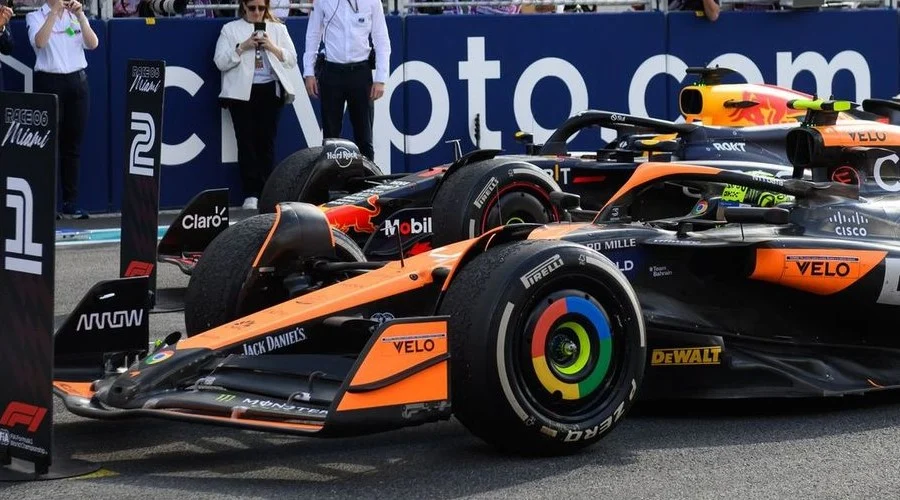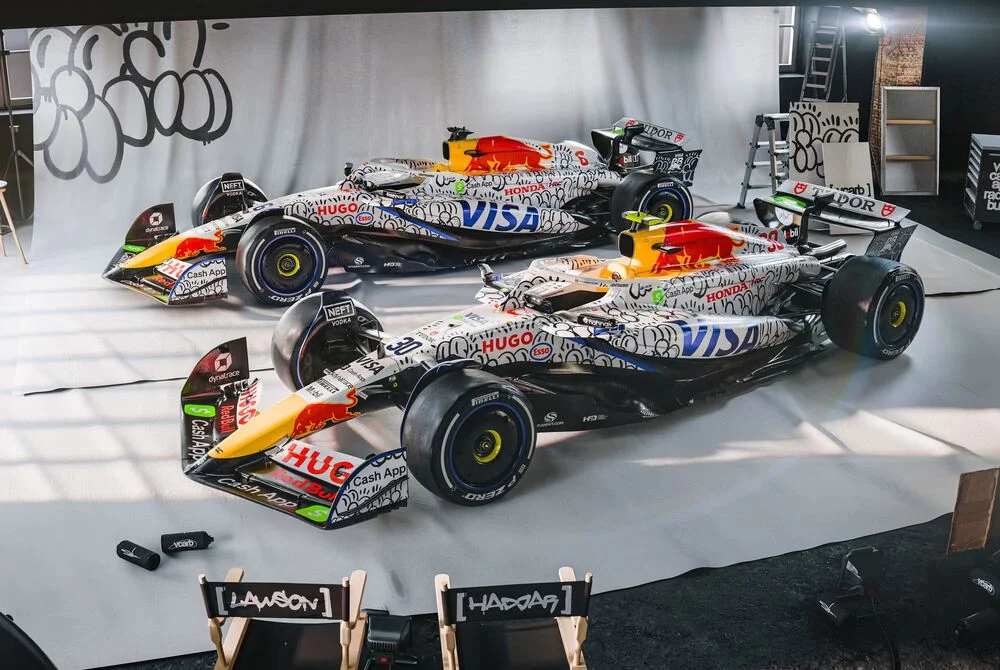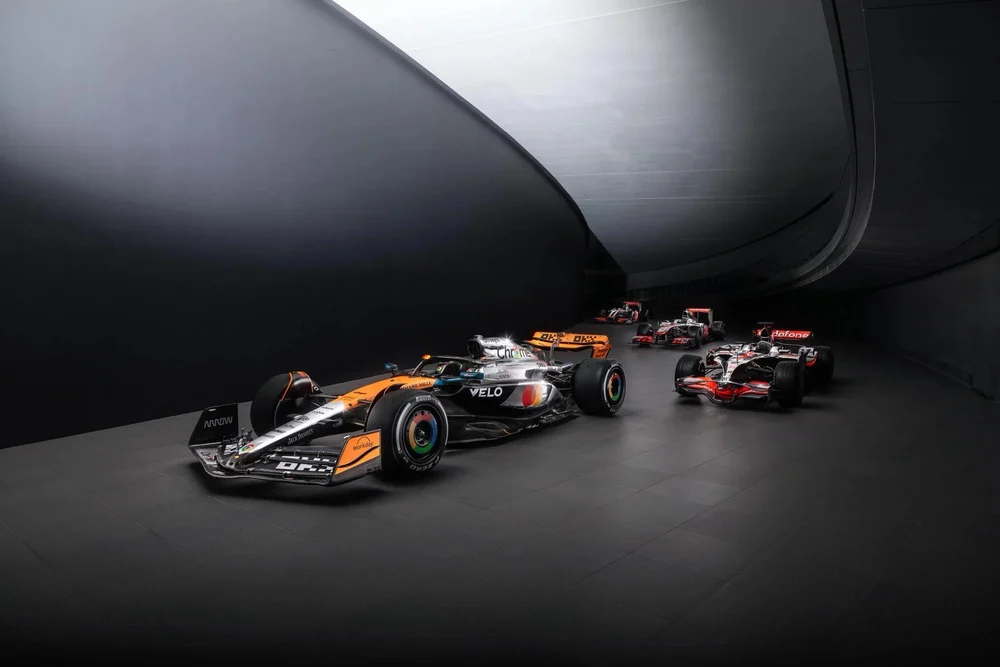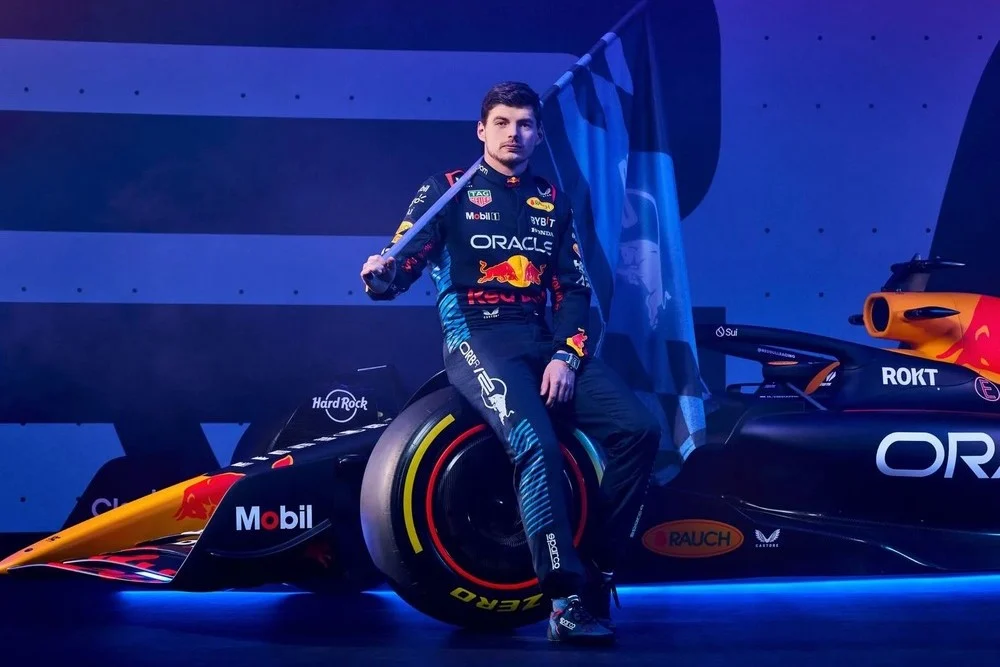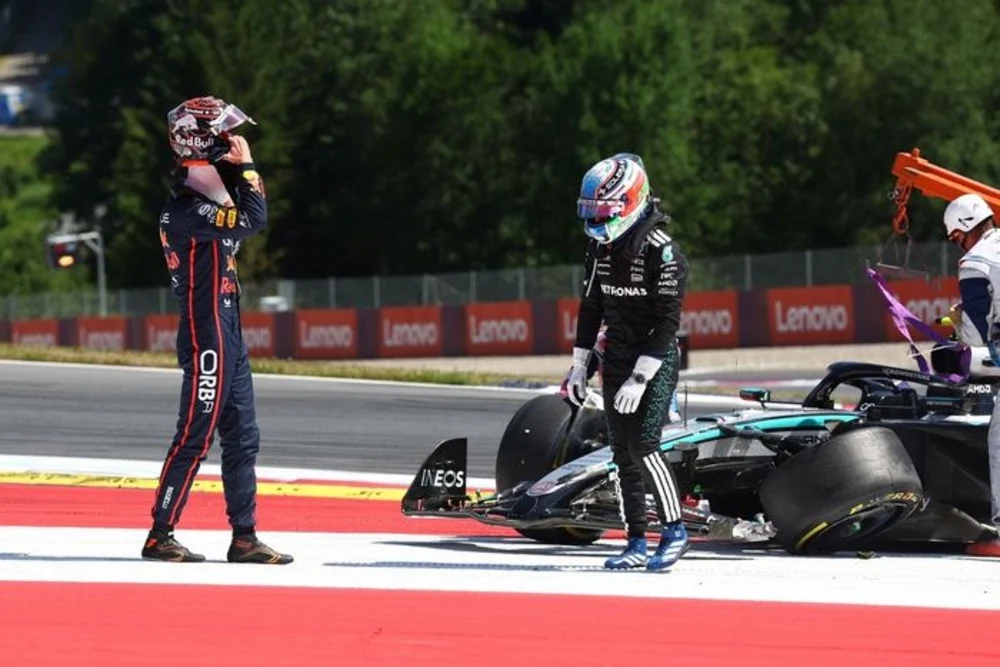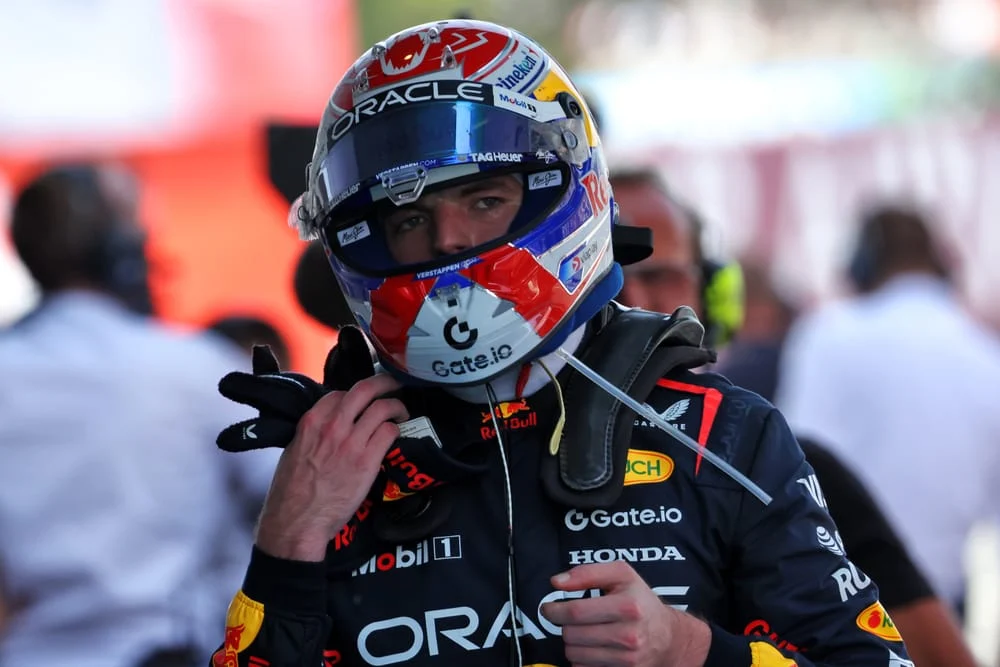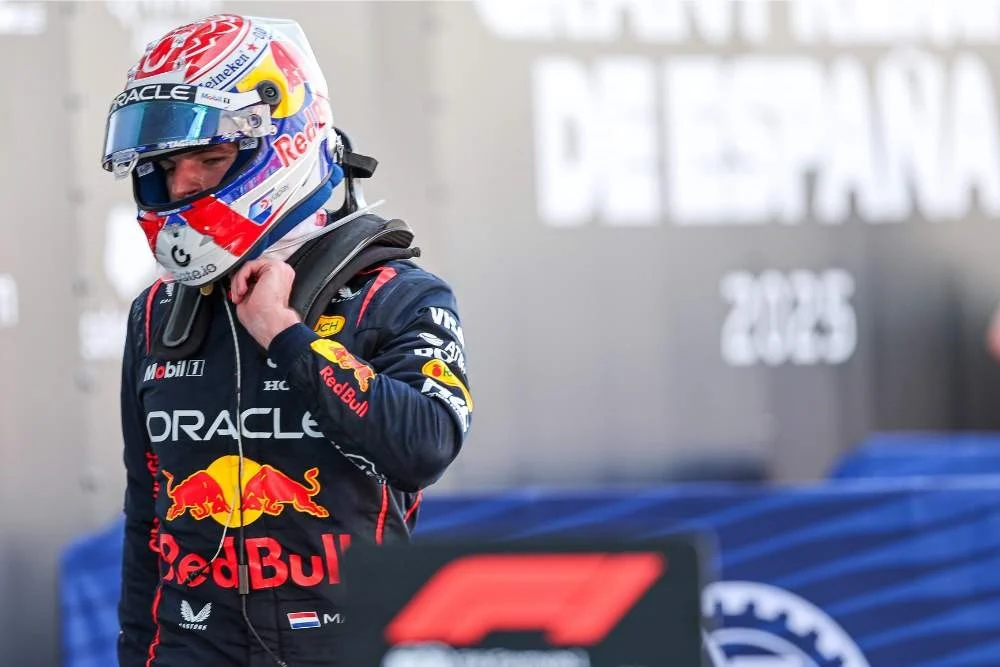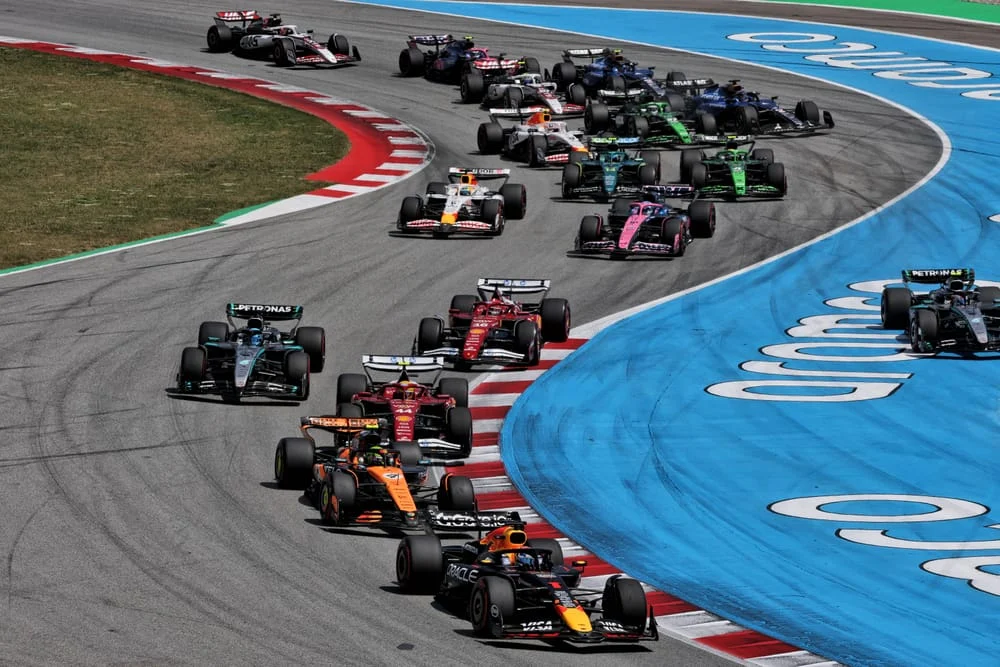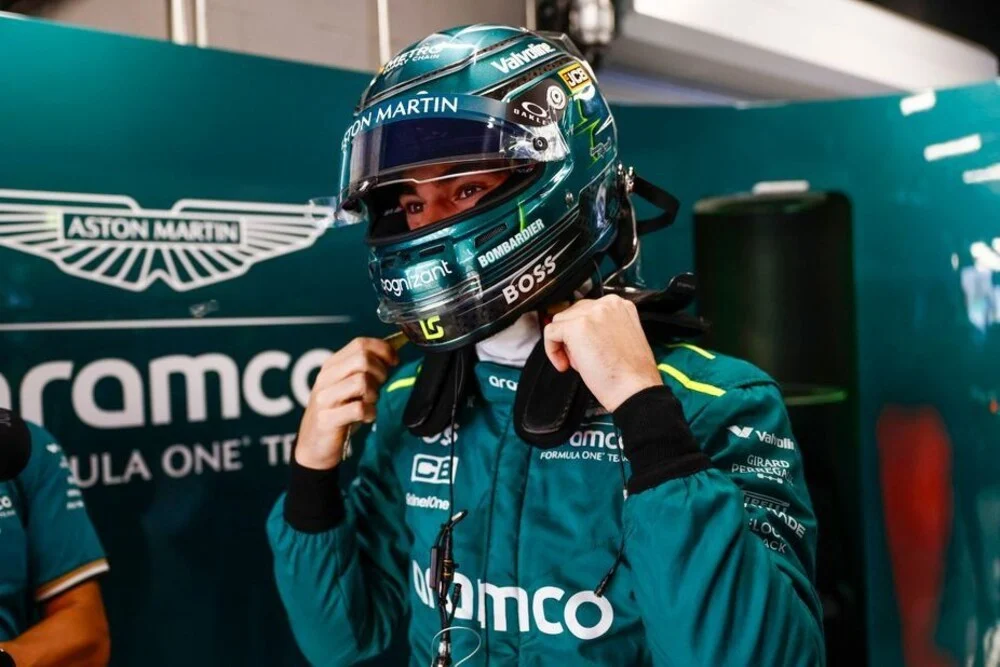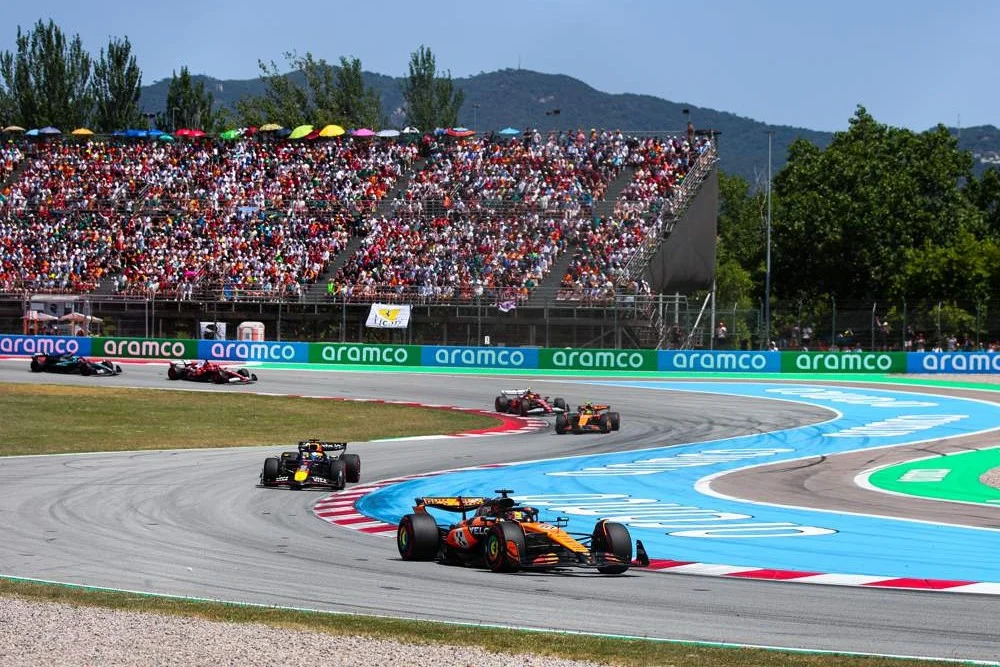The FIA has confirmed the legality of front wings flexing on all F1 cars including those of McLaren and Mercedes, amid scrutiny from rival teams Red Bull and Ferrari.
This comes after concerns were raised following the recent Italian GP, where the flexibility of the front wings on the two teams’ cars came under fire prompting an FIA investigation to ensure compliance with the 2024 regulations.
The onboard footage from both McLaren and Mercedes cars at the Italian GP showed notable front wings flexing leading to allegations from Red Bull and Ferrari that the designs were not compliant with the rules.
Team principal Christian Horner claimed that the front wings were “very, very different to the rest of the grid,” suggesting that their designs exploited the regulations as Frederic Vasseur indicated the matter warranted further attention from the FIA.
In response to the concerns, the FIA conducted an extensive examination of all front wings currently in use through rigorous testing protocols, including load-deflection tests and additional monitoring measures introduced since the Belgian Grand Prix.
The governing body implemented a system of video cameras to track the dynamic behavior of front wings during practice sessions. These cameras capture areas that are not visible through standard broadcast feeds, allowing for a more comprehensive analysis of wing flexibility.
The FIA responded with a statement on Tuesday that read: “The FIA is examining front wings at every event with numerous checks with respect to the relevant F1 Technical Regulation. All front wings are currently compliant with the 2024 regulations.
“Since the Belgium Grand Prix, the FIA has acquired additional data during FP1 and FP2 sessions to assess dynamic behaviours through an FIA-mandated video camera which captures areas of the front wing which are not visible through the official FOM cameras.
“This exercise will continue at least up until Singapore to ensure every team will have been running the mandated FIA camera on different types of tracks (low, medium, high and very high downforce).
“This will ensure a large database allowing the FIA to draw the most objective picture of the situation and quantify differences between the various dynamic patterns observed on track.”
It adds that “no component is infinitely stiff” and this sets the provision for a small amount of front wing flexing under a given load.
The rules state that “any part of the trailing edge of any front wing flap may deflect no more than 5mm, when measured along the loading axis, when a 60N point load is applied normal to the flap,” per Article 3.15.5 in the 2024 technical regulations.
“The front wing flexing has been a challenging area throughout the years, because the aerodynamic loading patterns between different competitors varies and it is therefore difficult to find a load vector which will cover all types of front wing construction.
“Other areas of the car – including rear wing and floor edges – have much more consistent aerodynamic loading patterns across the grid, making for a more universal load-deflection test.
“The FIA has the right to introduce new tests if irregularities are suspected. There are no plans for any short-term measures, but we are evaluating the situation with the medium and long-term in mind.”

